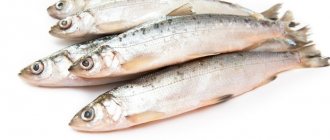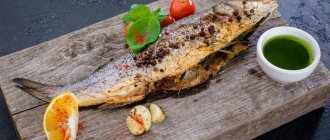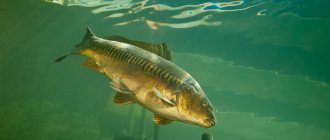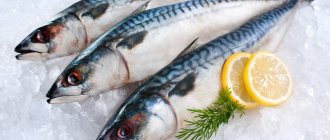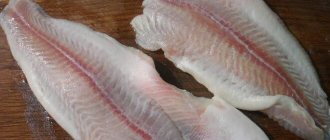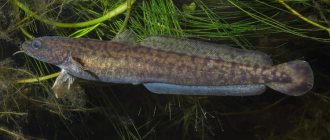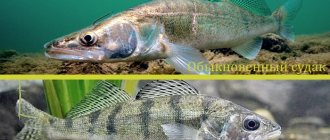- Are chir and schekur the same thing?
- Description Classification
- Where is it found?
This is the name given to the valuable commercial northern fish shokur (shchekur).
But it is not particularly popular among fishermen, and its fishing is not targeted due to the remoteness of its habitats. Until recently, most residents of our country did not know about the existence of this fish. Now the situation has changed, as we have managed to organize delivery of products to different points.
Benefits and harms
What are the benefits of chir fish? To evaluate its benefits and understand whether it is fatty or not, you need to study the composition. Due to the increased chromium content (meat contains the daily requirement of this microelement), the product normalizes blood glucose levels and enhances the effect of insulin.
Other beneficial properties of chekur are also known:
- activates metabolic and energy exchange processes;
- increases the body's defenses;
- strengthens the heart and blood vessels;
- accelerates blood circulation;
- minimizes the risk of strokes and heart attacks;
- gives strength to bones and cartilage;
- prevents diseases of the gastrointestinal tract;
- has a beneficial effect on the nervous system;
- stimulates brain activity;
- increases stress resistance;
- serves for the prevention of oncology;
- improves the condition of the skin, hair and nails.
It will be of particular benefit to pregnant women, providing the unborn child with “building material” for the brain.
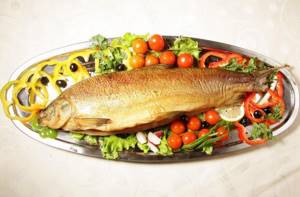
Baked Chekur
In very rare cases, cheekur, in addition to benefit, can also cause harm. Fish caught in polluted waters are dangerous, as their meat contains heavy metal salts.
The only contraindication for use is individual intolerance.
Chira lifestyle
For feeding, the whitefish uses bays, kurias, and also lakes connected to the river by a system of channels, sometimes making significant movements. Mostly immature fish enter the floodplain lakes located near the river in the spring to feed. When the water level drops, they leave the lakes and return to the river. Larger fish that have previously taken part in spawning rise to distant mainland lakes.
The beginning and end of the course, its intensity may vary depending on hydrological conditions. Not all fish return to the rivers; sometimes some of the fish that enter remain in the lakes for the winter. Chir does not make the same migrations as muksun or nelma, and therefore is known only to residents of northern Siberia.
The fish of the lake-river form, whitefish, which live permanently in continental lakes, lay their eggs in small rivers flowing into these lakes. There are known cases of spawning in the mainland lakes themselves, but in this case, to stimulate the development of reproductive products, the whitefish goes into tributaries, and in the fall returns to the lake and spawns.
The mass movement of sexually mature whitefish begins in the first half of August. The whitefish spawns in early October.
Spawning in broad whitefish is not annual; there are gaps in spawning seasons of two to four years or more. The beginning of spawning is determined by the water temperature and takes place in October-November, in lakes in December, at a water temperature of about 0-2 C. Having begun in open water, it continues under the ice, which helps maintain the number of whitefish, since the onset of freeze-up leads to the cessation of spawning fishing.
The female lays from 20 to 258 thousand eggs of light yellow color, with a diameter of 1.4-2.5 mm, on sandy and pebble soil. After spawning, it remains near the spawning areas, gradually dispersing to its usual habitats.
In the first months of life, juveniles feed on plankton, but quickly switch to consuming benthic organisms. The main food items of the adult broad whitefish are chironomid larvae and mollusks and benthic crustaceans. The larvae of caddisflies, mayflies, and stoneflies are not of great importance in the diet of broad whitefish and are a companion food. In lakes and rivers, whitefish feed most intensively during the period of open water, and weakly in winter.
Calorie content and BZHU
The nutritional value of fish is determined by its chemical composition. The product contains many useful substances: easily digestible proteins, fats, vitamins, minerals, saturated and unsaturated fatty acids. The ratio of BZHU chir is 80%:20%:0%.
Although shchekur meat is very fatty, it belongs to dietary products, since its calorie content is low (88 kcal per 100 grams).
Cheer recipes
Boiled chir fillet in white sauce
Those who, for whatever reason, adhered to the diet menu, have definitely tried…
View recipe
Fried chira fillet
The simplest thing you can do with river fish is fry it. But such large o...
View recipe
+ Other recipes from chir
When cooking meat, the calorie content of shchekur increases.
| Product | Calorie content per 100 grams |
| Fresh fish | 88 |
| Boiled | 88 |
| Salty | 125 |
| Cold smoked | 120 |
| Hot smoked | 177 |
| Fried | 200 |
Spawning and catching
Puberty of the whitefish occurs at the age of 6–8 years. From this time the female is ready to spawn.
Interesting! During the spawning period, females and males of whitefish “put on” their nuptial plumage, which looks like small white epithelial tubercles on the body, head and fins.
When the time comes to give birth to offspring (around the beginning of September), adult individuals rush from the seas to the rivers. In the Russian Federation, these are the mouths of the Ob, Yana, Kolyma, Pechorka, Indigirka and Yenisei.
Quite often, fish end up in riverbeds with well-developed eggs. During spawning, the whitefish stays mainly in the quiet waters of the lower reaches of rivers with a rocky or pebble-covered bottom.
Fish spawn in October-November, when the water temperature is approximately +1 degree. The duration of the spawning process is 20–25 days. Some females continue to lay eggs during freeze-up, which ensures the safety of the offspring and the further preservation of the population.
During spawning, the fish lays about 250 thousand large (about 4 cm in diameter) cream-colored eggs. The female whitefish then returns back to the sea, and the larvae, which hatch from the eggs in March, gradually turn into fry and go downstream, increasing their body weight.
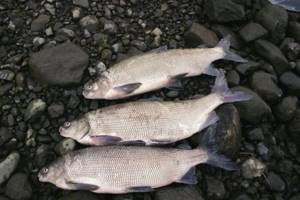
Due to its excellent taste, high fat content and the presence of a small number of bones, whitefish is a valuable commercial fish. However, given that it is found in hard-to-reach and remote water bodies, this fish is not an object of industrial fishing. Thanks to this, the number of individuals does not decrease, and today the whitefish is not in danger of complete extinction of the population.
Blackfish are caught by local fishermen who use spinning, fly fishing, nets or a float rod. Insects and their larvae, worms and shellfish meat are good baits.
Large specimens are rarely caught by fishermen. Mostly fish weighing 2–3 kg and about 50 cm long are caught on the hook.
Cooking methods
How is chir fish prepared? It is boiled, steamed, fried, baked, stewed, salted, dried and pickled, and used to prepare fish soups and rich fish soup. Thanks to its juiciness and minimal bones, shchekura meat serves as an ideal filling for pies. It makes delicious dumplings and cutlets. Residents of the North also eat fish raw (there are no parasites in its meat), making sugudai, rubanina and stroganina. A roll made from white meat of wild fish and red meat of pink salmon or salmon looks original.
Cheer stuffed
But smoked shokur is considered a real delicacy. The cold smoked product is especially valued due to its delicate and refined taste. It goes well with sour cream, mushrooms, vegetables, and cheese. They serve smoked meat and some fruits.
Distribution and habitats of broad whitefish
The whitefish is found in the north of Russia and Canada, in the Arctic Circle and beyond, in almost all rivers of the Arctic Ocean basin - in the Yenisei, Ob, Pechora, and reservoirs of Yamal. He doesn’t really like sea water and tries to avoid it. In addition to the river variety, there is also a lake-river whitefish, which lives mostly in lakes, but goes into rivers to spawn
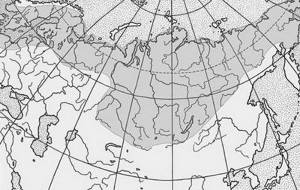
Chir is one of the most common fish species in the Yenisei and Ob system. It lives mainly in and near the Arctic Circle.
How to catch a chir (schokur)
As a rule, most Siberian fishermen catch this fish with fishing rods, spinning rods and, sad as it may be, nets.
The bait for catching whitefish is all kinds of insects, larvae, crustaceans, and mollusks. In addition to live baits, whitefish can also be caught using spoons.
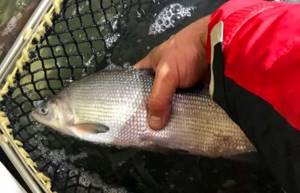
Thank you all for your attention!
No tail, no scales, fishermen! Share on social networks:
Whitefish photo and description
The whitefish, a photo and description of which can be seen below, is unfamiliar to fishermen in the middle zone and southern part of our country, since it can only be found in the north, in the cold fresh waters of the Arctic Circle. But she doesn’t really like sea salt water. Also, the chir fish has a second, no less common name - shokur, under which it is more popular in its homeland.
- Description
- Where is it found?
- Spawning
- Price
- Beneficial features
- What to cook
Chir fish - description
The whitefish belongs to the order of salmonids and to the same whitefish family as its more famous relatives - vendace, omul, whitefish, but is not as popular as they are among domestic fishermen. And all because few fishing enthusiasts are ready to go to the harsh northern regions to try their luck in hunting this amazing and mysterious fish.
Chir is not a small fish. It can reach quite decent sizes - about eighty centimeters in length and sixteen kilograms in weight. True, most fishermen’s catches include specimens weighing up to four kilograms and no more than half a meter in length. The maximum lifespan of a shokur is about twenty-six years.
The whitefish has a tall, laterally compressed body, covered with large silvery scales with a bronze tint. The back is darker. The head is small, very similar in appearance to the head of a bream. The nose is thick and flattened. The mouth is located below to make it more convenient for the whitefish to collect food located at the bottom of the reservoir. The whitefish, like salmon, has an additional fin on its back.
Despite the fact that whitefish, due to its gastronomic qualities, has the status of a commercial fish, its catching is spontaneous due to the remoteness of its habitat.
Where is whitefish found?
There are two forms of chir fish - lake-river and river. There is no particular difference between them in appearance, but it lies only in the habitat of the fish and the food supply, thanks to which the gar gains weight differently in different places. You can meet whitefish in rivers flowing into the Arctic Ocean:
- Yana;
- Indigirka;
- Kolyma;
- Pechora;
- Yenisei and others.
! In addition, the lake form of the shchukur lives in reservoirs located in the basin of the coldest ocean in the world, in Siberia and Kamchatka. Whitefish can also be caught in rivers flowing into the Bering and Okhotsk Seas. Read also: How to pickle pink salmon
In addition to Russia, whitefish live in Alaska and the northern provinces of Canada.
Whitefish spawning and its eggs
Shchukur spawning begins with the appearance of the first ice on reservoirs - in October-November. Wherever the whitefish lives - in a river or lake - it leaves its homes and goes upstream to pay tribute to nature and produce offspring.
For spawning, whitefish choose river sections with a sandy or pebble bottom, weak currents and great depths - up to fourteen meters. After spawning, the shchukur rolls back and begins to gain weight. Chir does not particularly stick to the same habitats.
Some fish, immediately after spawning, go in search of a new place of residence.
Chir is a rare fish, and as a result, its caviar will cost a lot: depending on the region - from four to twelve thousand per kilogram (the price also depends on the type of caviar - fresh, salted or frozen).
Fresh shokur caviar can not only be salted, but also fried. However, it is almost impossible to buy it in a store.
The only way is to purchase it on the market or via the Internet from direct suppliers of Far Eastern delicacies.
Whitefish price per 1 kg
The cost of chir fish in stores and on the market directly depends on the region in which it is sold, and on the shape and type of packaging:
- On average, a fresh frozen shokur carcass in the country costs about 700 rubles per kilogram;
- shokur cold or hot smoked - from 1200 to 1500 rubles per kilogram;
- canned chir fish (standard 260 gram can) will cost the buyer about 200-250 rubles apiece.
But even such a high price for this northern fish does not fully guarantee that it will be freely available in stores and supermarkets. Seeing this fish on the counter is a great success, since commercial fishing for whitefish is not able to sufficiently satisfy the needs of buyers.
Useful properties of chir
Living in the northern part of our country also affects the quality of whitefish meat - due to the cold, it is very fatty, and therefore very tasty, since fat is the main guarantor of the taste of almost any fish.
Despite its considerable size, shokur meat, like the meat of all salmon fish, is almost devoid of small bones.
Moreover, despite its fat content, the meat of this fish can be classified as a dietary product, since 100 grams of it contain only 88 kilocalories.
The beneficial properties of chir meat include:
- assistance in redox processes of energy exchange;
- prevention of gastrointestinal diseases;
- positive effects on the nervous system, skin and much more.
How to cook chir fish
Chir fish is a real gift for gourmets, as you can prepare any dish from it:
- nutritious and fatty meat allows residents of the North to consume shokur raw, making stroganina and sugudai from it;
- chir fish can be boiled, fried, baked and stewed;
- rich fish soup and various fish soups are prepared from it;
- however, smoking and drying come first, since most fishermen are confident that fatty and tasty fish simply has no right to be spoiled in a frying pan or pan. And they are partly right. After all, smoked chir is a real delicacy, the cost of which not every buyer can afford.
Recipes for cooking chir in Yakut style
Source: https://fish-haus.ru/ryba-chir-opisanie/
Description
It reaches 0.8 m in size and weighs 16 kg, although on average it weighs 2-4 kg. The body of the Chir fish is wide, laterally compressed. The nose is thick, humpbacked, protruding beyond the lower jaw; mouth is small. The color of the sides is silver with a golden tint, the back is dark, large and dense scales.
During spawning, epithelial tubercles appear on the head, body and fins of males and females, which are more pronounced in males. In females during the spawning period, the first ray of the pectoral fin becomes enamel-white, while the remaining rays remain dark.
Life expectancy is up to 26 years.
In Siberian reservoirs there are two forms of whitefish: river and lake-river, representatives of which spend most of their lives in the lake and only go out into rivers to reproduce.
Fish meat
Chir is distinguished by excellent taste and a small amount of bones. Because fish live in low temperatures and the amount of fat is quite high. Chir is used by residents of the North for planing and sugudai. Classic methods of frying and baking also help make delicious dishes. Chir is suitable for hot and cold smoking methods.
The fish meat is very tender and has a characteristic white color. Due to the fact that it is rich in natural fat, very little oil should be added during cooking.
Chir fish is not only very tasty, but also healthy due to its high content of valuable microelements - such as zinc, sulfur, molybdenum, chlorine and nickel.
This type of fish is very widely used in cooking. Traditional Siberian dishes such as stroganina and sugudai are often prepared on its basis. For their preparation, it is customary to use exclusively fresh fish, which can only be purchased in the area where it lives. However, it should be noted that freshly frozen chir fish perfectly preserves all its original beneficial and nutritional properties.
This fish is characterized by significant meatiness with a sufficient amount of natural fat. Thanks to these qualities, it is very good to bake or fry, and also to make amazingly tasty cutlets, pies, dumplings, and many other equally popular treats from this fish.
Shchukur in pickled form is extremely popular. In addition, it is used to make fillings for all kinds of rolls and pies. The fish soup made from this type of fish turns out to be surprisingly tasty and aromatic. When preparing rolls, fish meat is often combined with representatives of species such as pink salmon and salmon.
Cold smoked chir fish is rightfully considered one of the best appetizers. As a result of special processing, the tender meat of this fish acquires incomparable flavor and aromatic shades. This wonderful appetizer is recommended to be served with sour cream, mushrooms, vegetables, and cheese. In addition, even some varieties of fruits go well with it.
Sources: ru.wikipedia.org , sibrybalka.ru, vkusnoblog.net
Similar articles:
Burbot
Burbot, or common burbot (Yakut. Syalyhar, Syan, aan (Kolyma)) is the only exclusively freshwater fish of the order Gadiformes. It has commercial value. It is caught in Siberian rivers. They cook fish soup from it and bake pies. The liver of burbot is large and very fatty, and is a delicacy. Durable thick leather is used for crafts...
Pink salmon
Pink salmon (Yakut. Kyhyl balyk) is a species of anadromous fish from the salmon family (Salmonidae). The smallest and most widespread representative of the genus of Pacific salmon (Oncorhynchus)....
Siberian roach
Siberian roach (Yakut. Kyhyl kharah, kyhytai) is a subspecies of roach, a ray-finned fish from the carp family, common in Siberia and the Urals....
Fish of Yakutia
According to the latest data, in the territory of Yakutia alone there are more than 450 thousand rivers and streams with a total length of over 1.5 million kilometers. According to Yakutrybvid data, the fishery fund includes 9,053 rivers with a total length of 28.1 thousand kilometers, which is 2% of the total river fund. The rivers of greatest importance for fisheries are: Lena, Kolyma, Indigirka, Yana, Olenek, Anabar and their large tributaries Aldan, Vilyui,...
Ide
Ide (Yakut. Ten) is a species of fish from the carp family. Young fish are called roaches….
General information
Another name for shchekur is chir. This is a freshwater fish from the genus whitefish, part of the large family of salmonids. The main feature of fish is its adaptability to life in water at low temperatures. Let's look at the description of the fish in more detail.
Description
Shchekur is a freshwater and semi-anadromous fish, sometimes reaching quite impressive sizes. The record weight of an adult chekura is about 16 kg, and the length can reach 80 cm. However, mostly fishermen's trophies are smaller - up to 50 cm long and weighing no more than 4 kg.
The fish has a relatively long lifespan - more than 20 years. Maturation of fish can last from 6 to 8 years.
The chekur fish has a strong, fleshy body with a characteristic compression on the sides. At the same time, in profile the fish seems very tall. The entire body of the chekura is covered with large scales, which fit very tightly to the body. The only place where a fish does not have scales is its head.
Shchekura's head is small, completely disproportionate to its long body. Many fish have a significant “hump” on the nose. The nose itself is quite thick, protruding beyond the lower jaw. The upper jaw also protrudes forward. It is relatively short, and has a greater width than the lower one.
The fish has a small, lower mouth, which corresponds to its diet - the whitefish feeds near the surface of the bottom, picking up food from it. The fish is a typical bottom predator. The whitefish's diet includes mainly benthic invertebrates: insects, crustaceans and mollusks. Whitefish fry feed on plankton and benthos.
The fish feed most actively in the warm season. In winter, the activity of the shchekur decreases significantly and it eats practically nothing. During spawning, the fish have no food at all.
The color of the broad on the sides is silver with shades of yellow-gold. The back is dark in color. The belly is light, with a white-yellow tint.
Differences from muksun
Muksun is one of the main taste “competitors” of shchekur. It is also a fish from the salmon family and the whitefish genus, but has slight differences from the broad whitefish. The average muksun reaches approximately the same size as the broad whitefish. The maximum dimensions of the caught muksun were 75 cm in length and 13 kg in weight.
The taste of muksun meat is considered more refined than that of chir. On the other hand, chir caviar is valued more than muksun caviar. The fat content in muksun meat is also significantly higher than that of chir.
Another important difference is rarity. No more than a hundred years ago, the population of muksun was very large, but now the situation has changed greatly and the fish has become very rare. For the past 5 years there has been a ban on catching muksun in natural habitats. Only fishing for scientific purposes is permitted. All fish appearing on official sale are of artificial origin.
Chir is not in danger of such a situation. Its conservation status is “Least Threatened Species,” meaning it does not require protection and its population size is not of concern.

